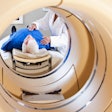Positron emission mammography (PEM) is more sensitive than whole-body PET or whole-body PET/CT for assessing local extent of breast cancer, according to a study conducted by researchers at the American College of Radiology Imaging Network (ACRIN).
Dr. Wendie Berg, PhD, and colleagues compared PEM's performance in index and additional cancer detection, presurgical planning, and axillary staging to that of whole-body PET (WBPET) and whole-body PET/CT (WBPET/CT) in women with newly diagnosed breast cancer. Berg presented the team's results at last year's RSNA meeting in Chicago.
The study cohort consisted of 178 women with a median age of 60 years. Of the group, 109 women underwent PEM as well as WBPET/CT as part of usual care, while 69 women underwent PEM and WBPET.
Of the 109 women who had PEM and WBPET/CT, 44 underwent the procedure immediately after the PEM exam, while 65 had the exam at another time (ranging from 20 days prior to the exam to three days postexam). Radiologist interpretations were compared to surgical histopathology results. The median tumor size of known cancer was 1.4 cm, and the median size of additional tumors found was 0.8 cm.
Of the 69 women who received PEM and WBPET, 66 had a residual index tumor at surgery, with 61 (93%) of these tumors seen on PEM and 37 (56%) seen on WBPET. Fifteen (22%) of 69 had additional ipsilateral tumors, with seven (47%) seen on PEM and one (6.7%) seen on WBPET.
PEM proved comparable in terms of specificity when compared to WBPET: Of 54 breasts without additional cancer, 49 (91%) were negative on PEM and 52 (96%) were negative on WBPET. But PEM was more specific in terms of positive predictive value of biopsy recommendation, confirming seven of 12 (58%), compared with WBPET's one of three (33%).
Regarding the 109 women who had both PEM and WBPET/CT, all had residual tumor at surgery, Berg's team found. In the group, 104 tumors (95%) were seen on PEM and 95 (87%) were seen on WBPET/CT. Twenty-three (21%) of the 109 had additional ipsilateral tumors; of these additional tumors, 13 (57%) were seen on PEM and three (13%) were seen on WBPET/CT.
Again, PEM proved comparable in terms of specificity when compared to WBPET/CT. Of 86 breasts without additional cancer, 78 (91%) were negative on PEM and 82 (95%) were negative on WBPET/CT. But PEM was more specific regarding positive predictive value of biopsy recommendation, confirming 13 of 21 (62%), compared with WBPET/CT's three of 17 (43%).
The combination of WBPET and CT found more tumors -- 97 (74%) of 131 -- compared to WBPET alone, which found 39 (47%) of 83.
PEM was more sensitive than either WBPET or WBPET/CT, and WBPET/CT was more sensitive than WBPET, for index and additional ipsilateral tumor detection, Berg concluded.
| The study was funded in part by PET developer Naviscan, which provided the PEM device used. Berg is a consultant with the company. |





















